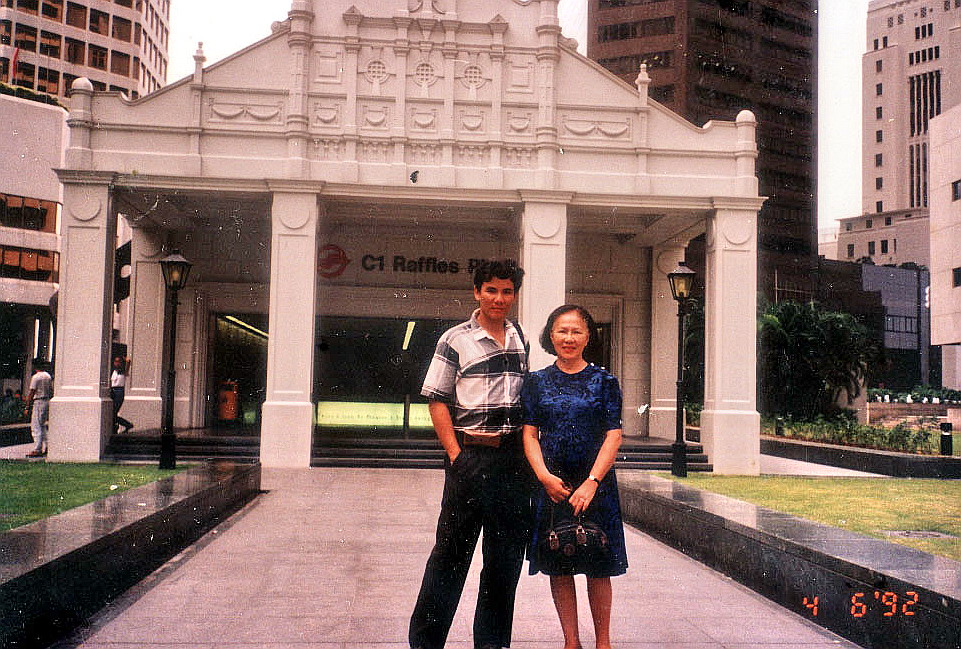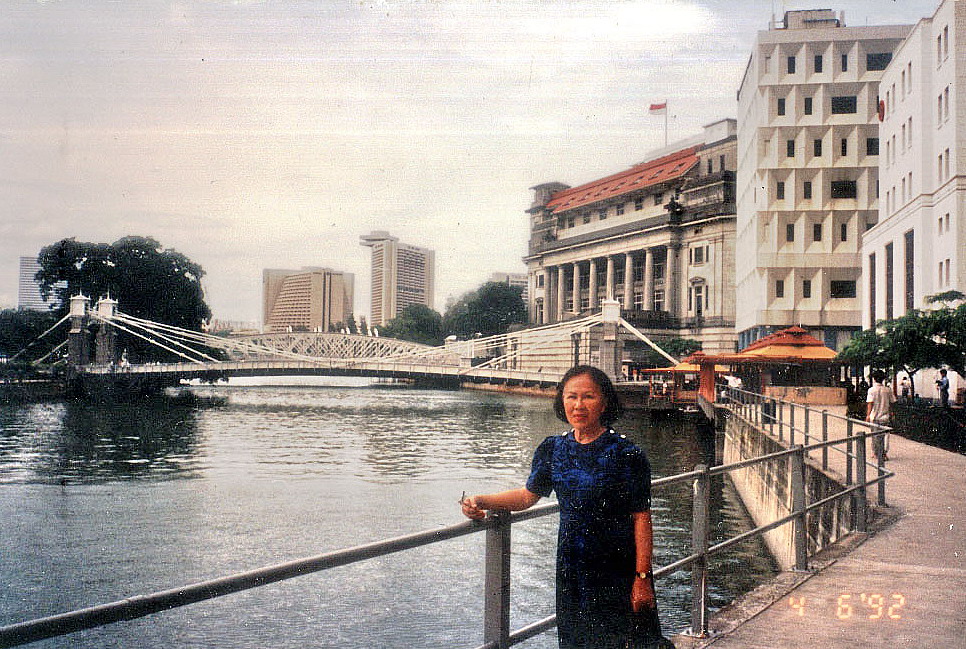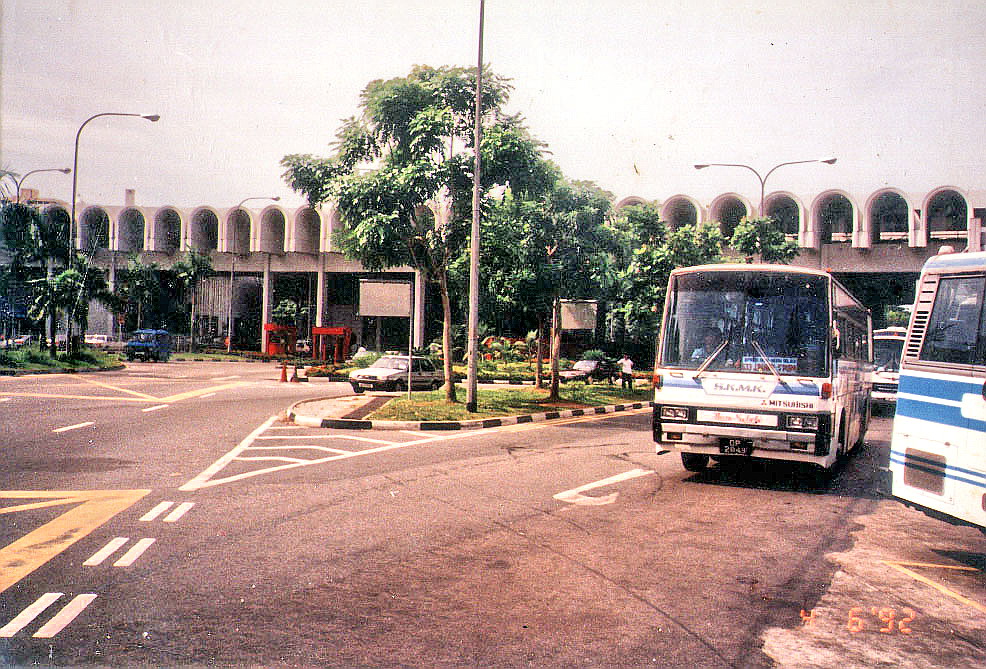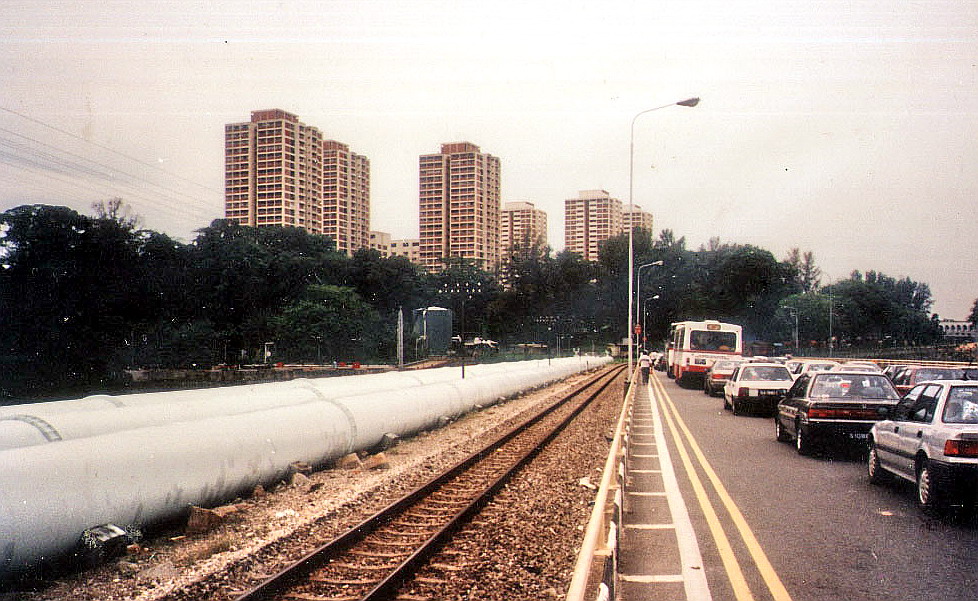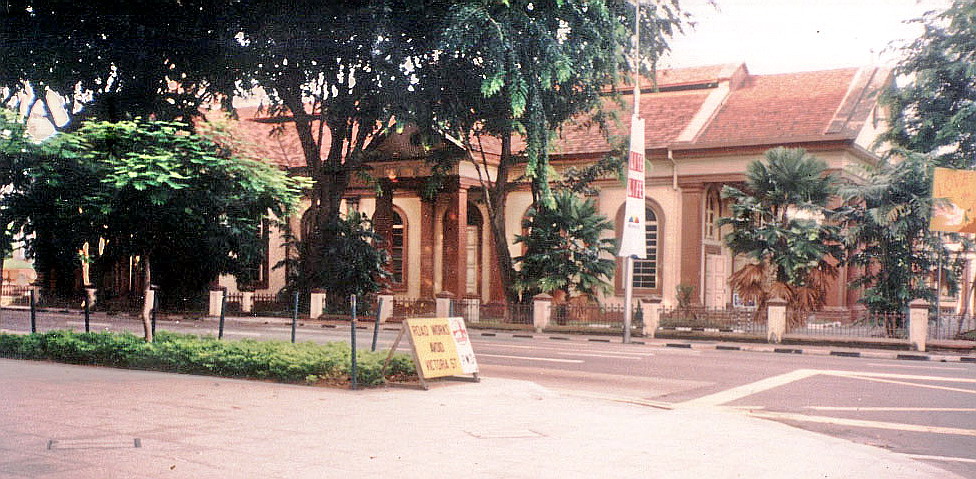After my Johor Bahru (Malaysia) tour, I returned to the Cockpit Hotel to pick up Mom for our Batam Island (Indonesia) tour. Located 20 kms. from Singapore, this island of the Riau Archipelago is the closest Indonesian island to Singapore. To get there, we had to get a fast ferry from Finger Pier along Prince Edward Rd..
From the hotel, we had lunch at a Pizza Hut outlet then walked all the way to the Dhoby Ghaut Station where we took the MRT up to the Raffles Place Station. From here, we walked all the way to the pier. Along the way, we passed by a number of tourist attractions at the downtown area (the Dalhousie Obelisk, the Cavenagh Bridge, Victoria Theater, Empress Place) and the Padang (the Supreme Court and City Hall Buildings).
Cavenagh Bridge, a suspension bridge (the only one in Singapore) spanning the lower reaches of the Singapore River, was opened in 1870 and is one of the oldest bridges in Singapore and the oldest bridge in Singapore that exists in its original form.
The Dalhousie Obelisk, located on the north bank of the Singapore River, is situated at Empress Place and near the Victoria Theater and Concert Hall. Designed by Government Surveyor John Turnbull Thompson, it commemorates the second visit of Marquis of Dalhousie, the Governor-General of India in February 1850. It was originally located at Dalhousie Pier but was transferred to its present site in 1886.
Empress Place, built in 1834 as a courthouse, was later used as offices for the government departments until the late 1980s. On April 7, 1989, it was converted to a museum after a 14-month, S$25 million renovation. On February 14, 1992, it was gazetted as a National Monument. Its imposing Neo-Palladian facade has wooden louver windows and pitched, clay tile roof.
Subsequently, the Empress Place Building underwent renovations and, on March 2, 2003, it reopened as the second wing of the Asian Civilizations Museum exhibiting Southeast, South and West Asian collections.
The Victoria Theater and Concert Hall, originally built in 1862 as Singapore’s town hall, is a complex of 2 buildings and a 54 m. high clock tower(completed in 1906) joined together by a common corridor. The Victoria Memorial Hall, built in 1905, is the home of the Singapore Symphony Orchestra (SSO), transferred here in 1979.
The Neo-Classical-style Singapore City Hall and its sister building, the Supreme Court, both on St. Andrew’s Road and overlooking the Padang, are also some of my favorites and both are reminiscent of our own National Museum complex, designed in the Federal style of American architect Daniel H. Burnham, the planner of Baguio City.
The Singapore City Hall, formerly known as the Municipal Offices, was built in 1929. Its steps were the site of the formal surrender of Japanese armed forces, headed by Gen. Itagaki to Admiral Lord Louis Mountbatten, Supreme Allied Commander of Southeast Asia. In 1952 the building’s name was changed when Singapore was finally made into a city by a deed signed by Britain’s King George VI and conferred by the Duchess of Kent.
The impressive Supreme Court Building, on the other hand, was designed by government architect F. Dorrington Ward and was completed in 1939. It is the last Classical building to be so completed. What’s more, the building’s murals were designed by Italian artist Cavaliere Rodolfo Nolli.
Victoria Concert Hall: 11 Empress Place, Victoria Memorial Hall, Singapore 179558. Tel: 6338 6125.

